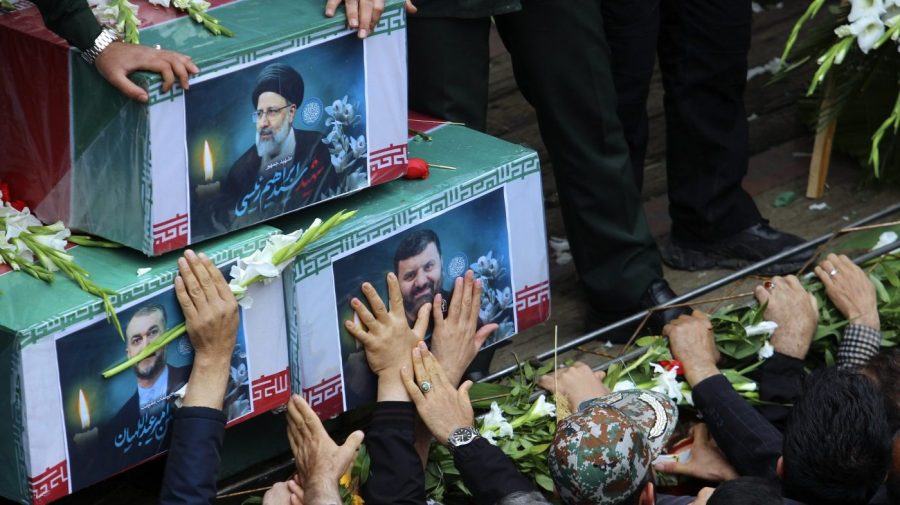Quick Bytes
- Iran mourns the death of President Ebrahim Raisi and officials in a helicopter crash.
- The crash’s cause is under investigation; it raises questions about Iran’s leadership succession.
- Mourners gathered in Tabriz, with the bodies later moved to Tehran and Qom.
- Global reactions vary, with condolences from allies and critical remarks from the US.
Iran Faces Uncertainty After Presidential Tragedy
Iran is in a state of mourning following the tragic helicopter crash that claimed the life of President Ebrahim Raisi, the foreign minister, and other officials.
The incident occurred under severe weather conditions in northwest Iran, and the crash site’s remote location delayed its discovery. With the investigation ongoing, the sudden loss of President Raisi, a potential successor to Supreme Leader Ayatollah Ali Khamenei, has plunged the country’s political future into unpredictability. The upcoming national elections, only a month away, now lack a clear presidential front-runner.
Thousands of mourners participated in a procession in Tabriz, paying their respects to the deceased. The bodies were then transported to Tehran and the sacred city of Qom for further ceremonies. Raisi, known for his hardline stance and involvement in mass executions, had been a divisive figure, with his death eliciting mixed reactions domestically and internationally.
While some celebrated, others, particularly Iran’s allies like North Korea, Russia, and China, offered warm tributes. The US, while extending condolences, did not shy away from criticizing Raisi’s human rights record. White House spokesperson John Kirby acknowledged Raisi’s controversial legacy but maintained the customary expression of sympathy over the loss of life.
As Iran navigates this challenging period, the world watches to see how the nation will address the void in its leadership and the direction it will take moving forward.



